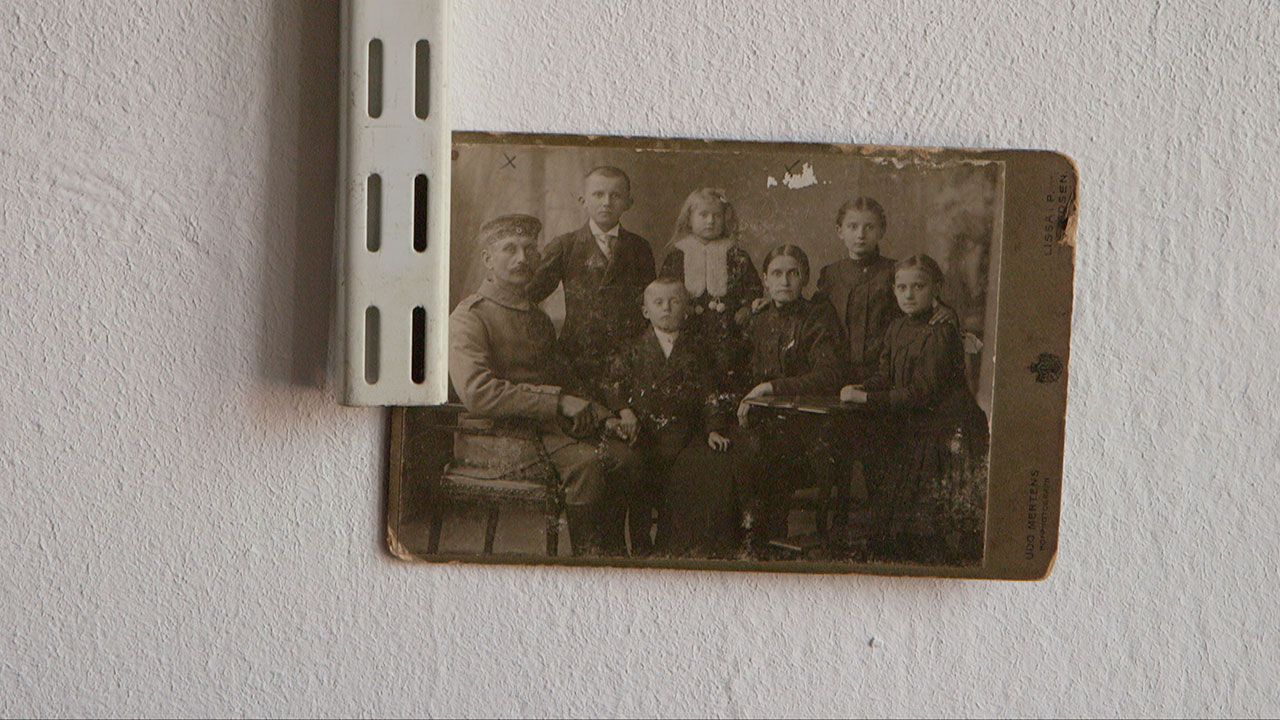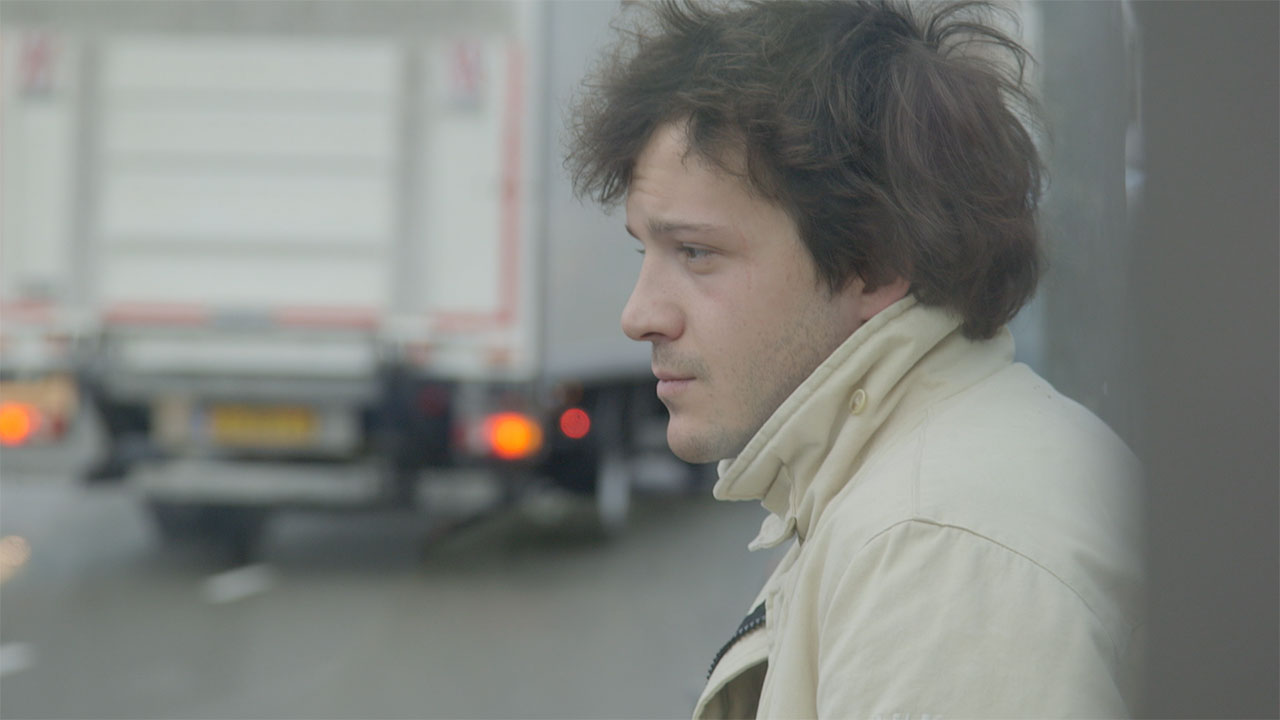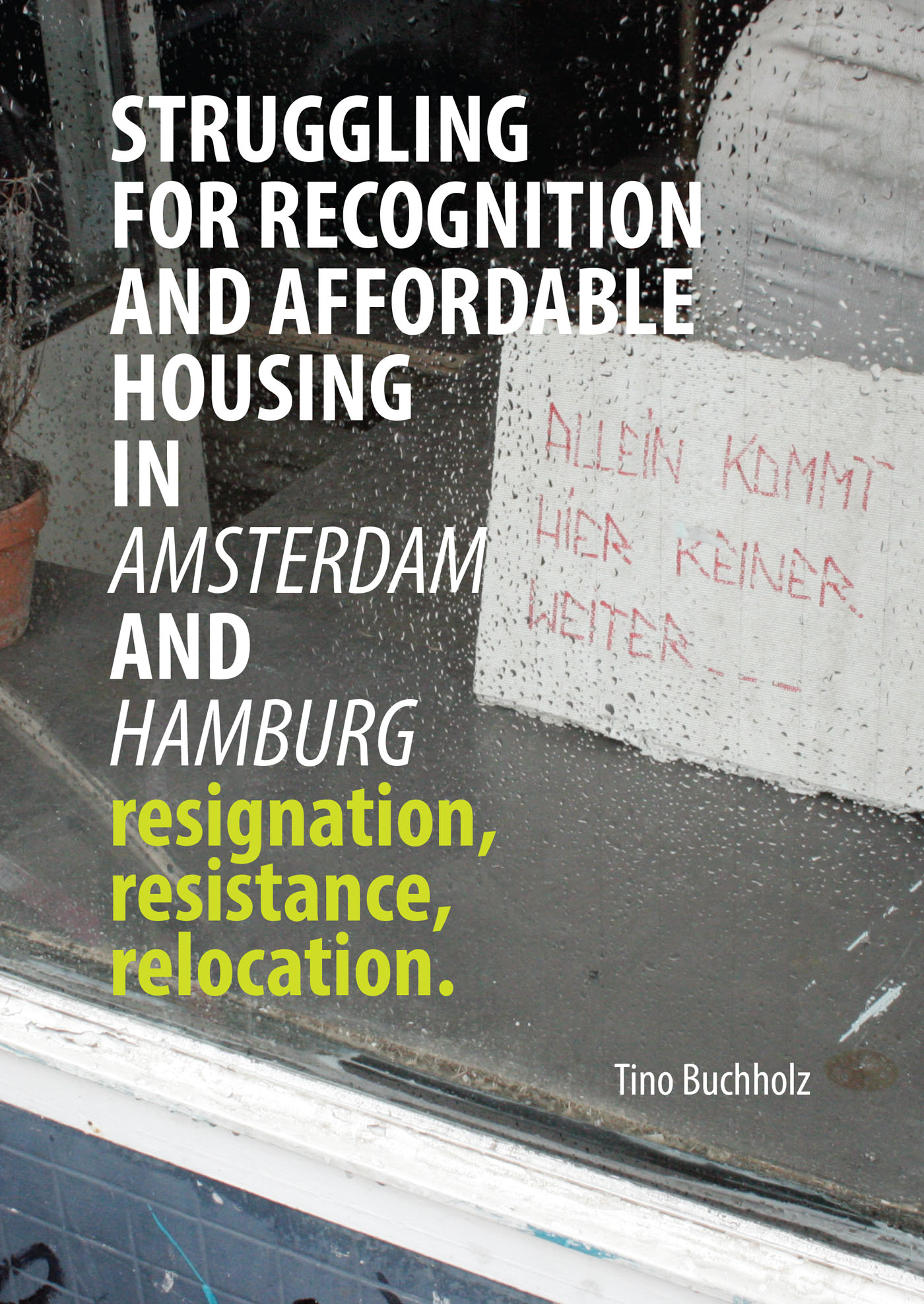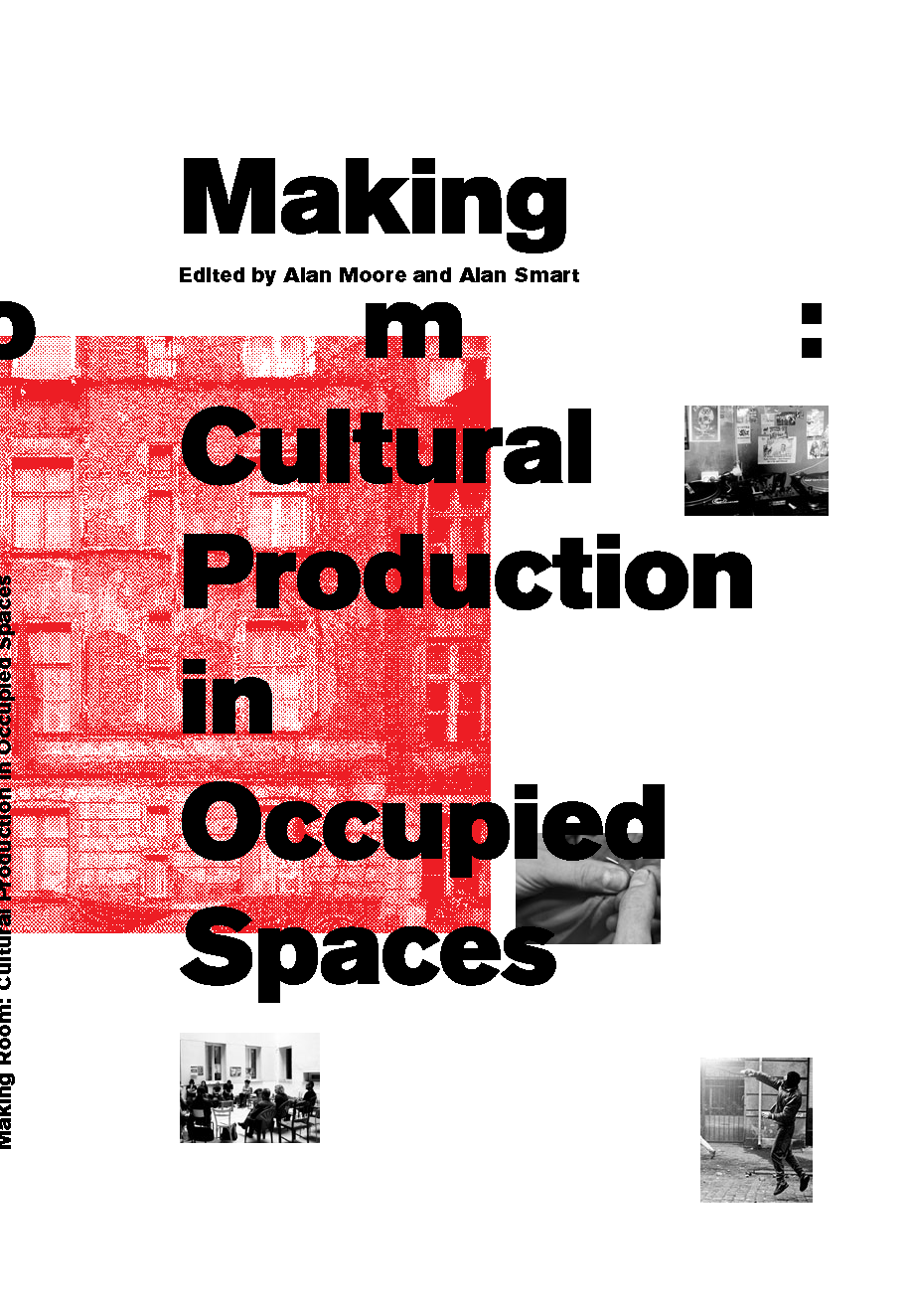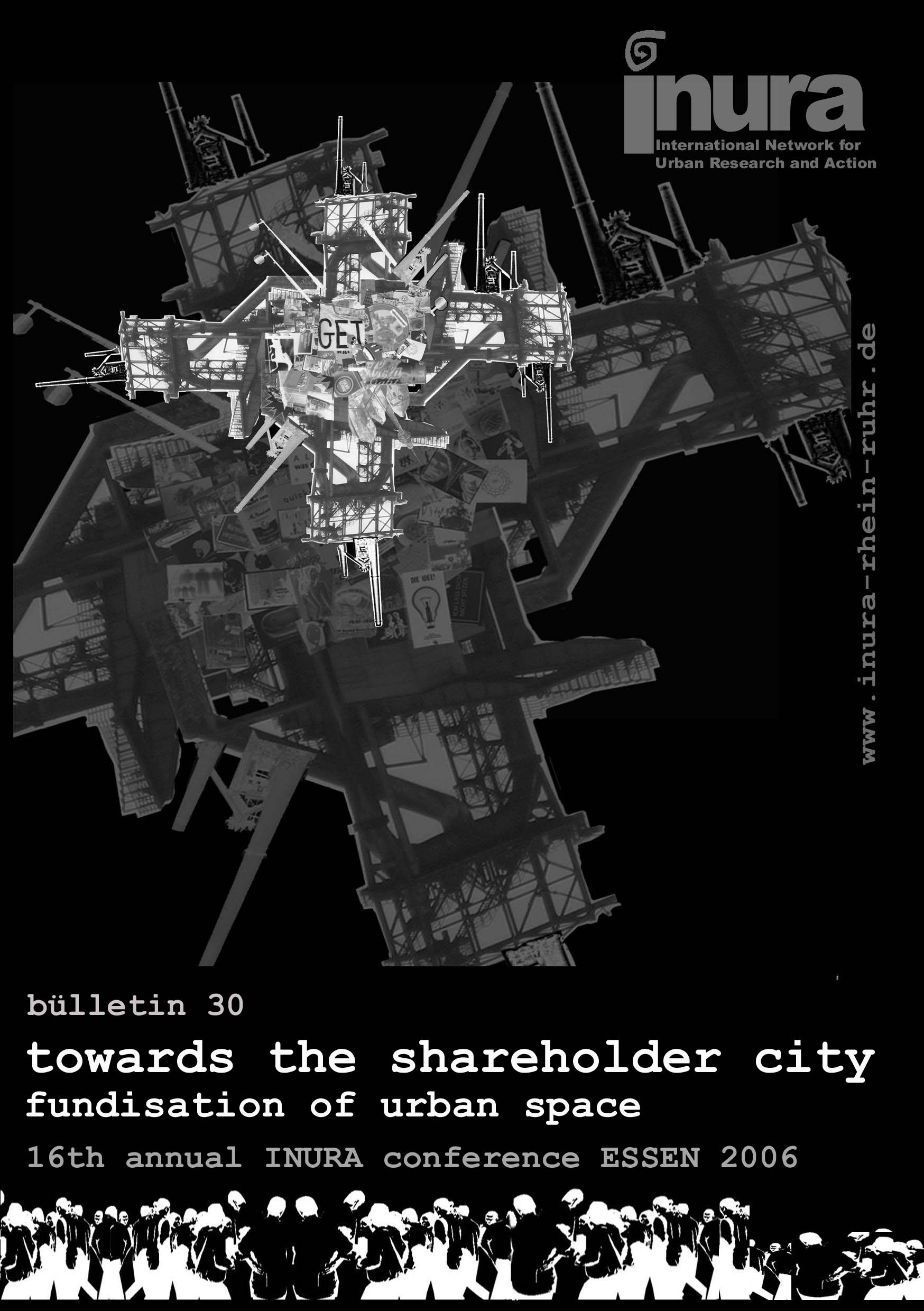
Roger Keil
„Tino Buchholz’s mesmerizing movie ‚How Poles Became White‘ is an elegy of contemporary Europe.
Read More
„Tino Buchholz’s mesmerizing movie ‚How Poles Became White‘ is an elegy of contemporary Europe. East and West. A gif of its emerging uprooted youth that will be the continent’s future, where ever they are from, whatever they do. But their
advance is on hold, their sidewalk philosophies of urban life suspended between nostalgia and melancholia. Yet not resignation. A thoroughly enjoyable experience, a
glimpse into an urban world that is as much dreamscape and bleak reality. And, yes, it is also a film about Poles becoming white“.
ROGER KEIL | Professor of Environmental & Urban Change | York University | Toronto | Canada
Jana Perković
„What is the European history of racism? Ask Eastern Europeans – the Slavic peoples after whom slavery is named.
Read More
„What is the European history of racism? Ask Easternx Europeans – the Slavic peoples after whom slavery is named. The colonial escapades of Western European nations into the East, the creation of a domestic type of forced labour – serfdom – and the racial hierarchies invented to justify the
economic disparities that became inherited – none of this is normally considered Europe’s cultural heritage. But it is, argues Tino Buchholz. This quiet, unassuming film observes how the continent’s unresolved, undigested history still plays out today, in the everyday lives of its
three characters. Jacek, Roma and Nidal are trapped between ironclad historical prejudices towards the Arabs, the Roma, and the Poles, prejudices that shift as they move geographically, between the Netherlands and Poland. But the film is not a treatise in political theory. Rather, it
observes with great tact, and not a word of commentary, these three individuals as they do their utmost best to remain seen as human beings, and to realise their potential.
There is much to like in Buchholz’s fly-on-the-wall debut. The camera glides over his protagonists with great gentleness, occasionally digressing to dwell on the prefabricated residential blocks, a Dutch bicycle workshop, or the antiquated dining room of an elderly relative who has a lot to say
against Muslims, examining these everyday environments to alert us to the wild couplings of taste, class and racial prejudice. In contrast, music is a leitmotif of freedom: all three characters express, remix and reinvent their identity through music. The sound, in counterpoint to much of what is said on camera, gleefully splices together Hip Hop, R’n’B, Polish and Arabic folklore, opening up a space for creativity and resistance – not through a political revolution, but through personal expression.
The moments of truth are subtle, and may be missed by those who long for easy comparisons: you will not find the Polish religious Right, nor a paean to the Dutch liberalism, in How Poles Became White. But they will be immediately recognisable to anyone who ever tried to avoid putting their Slavic surname on a rental application form“.
Jana Perković | Critic | The Age | Melbourne | Australia
Container City | Letzter Sommer
(GER 2024, 62min, Universität Stuttgart)
CORE CREW
Benjamin Bischof • Kamera & Ton
Andonia K. Gischina, Benjamin Bischof, Johannes Karger • Montage
Alvaro Garcia & Tino Buchholz • Zweite Kamera
Robert Kondorosi • Sounddesign & Farbkorrektur
Johannes Karger • Grafikdesign
Stefan Baier • Webdesign
Tino Buchholz • Regie
Universität Stuttgart & TUNi Productions
• Produktion
CAST
Peter Weigand & Łukasz Lendziński
Studio Umschichten
Moritz Finkbeiner
Neue Schachtel
Anna | NorDIY
Florian Feisel
Puppenspieler
Markus Weismann & Cem Arat
ASP Architekten
NEWS/MEDIA
Container City | Letzter Sommer dokumentiert einen ungewöhnlichen Ort in der gewöhnlichen Stadt und einen letzten Sommer, der keiner war. Im Schatten von s21 und im Scheinwerferlicht von iba27 beleuchtet der Film die produktive Stadt Stuttgart und ihre Internationale Bauausstellung: Verzögerungen im Betriebsablauf der Stadtplanung, das Erbe industrieller Moderne, den menschlichen Maßstab der Baukultur, permanente Temporalität und die notwendig unfertige Stadt. Ein Film über Gehorsam und Bewegung, Aneignung und Umschichten in Stuttgart.
How Poles Became White
(NL/ AT/ GER 2020, 92min)
How Poles Became White takes up Kacper Pobłocki’s thought-provoking essay on class & race: tracing the roots of what it means to be somebody or nobody in Europe. Drifting East and West the film tells the story of a generation, Jacek (28), Nidal (27) and Roma (27), who don’t rebel but embrace the conflicts of our time with melancholy. While Jacek and Roma reach out for social mobility in the Netherlands, Nidal leaves the Middle East to live a self-determined life in Poland. Struggling with migration and geographical whiteness all three face the question of who they are and where to belong.
How Poles Became White takes up Kacper Pobłocki’s thought-provoking essay on class & race: tracing the roots of what it means to be somebody or nobody in Europe. Drifting East and West the film tells the story of a generation, Jacek (28), Nidal (27) and Roma (27), who don’t rebel but embrace the conflicts of our time with melancholy. While Jacek and Roma reach out for social mobility in the Netherlands, Nidal leaves the Middle East to live a self-determined life in Poland. Struggling with migration and geographical whiteness all three face the question of who they are and where to belong.
CORE CREW
Tino Buchholz • director & producer
Christian Zuidema & Katharina Gugerell • co-producer
Benjamin Bischof • director of photography
Michał Pełczyński, Bartosz Śrama, Thomas Grootoonk • additional camera
Dominik Wulf & Andonia Gischina • film editor
Benjamin Bischof & Robert Kondorosi • sound
Stefan Baier • design
CAST
Jacek Pawłowski
Nidal Kalboneh
Roma Kwiatkiewicz
Kacper Pobłocki
Director’s Note
Delivering my debut feature to Amsterdam – and the world – on November 20th I am fully aware of the complexity this film touches upon, and creates, when crafting the intimate portrait of a shy guy and his story he tells only me. The complexity certainly comes from its superstructure and very title, where I portray the struggle with class & self-formation, and take it further to racism, to what one would usually expect from a black & white debate in Europe these days. Taking Kacper Pobłocki’s original essay further this film does not exactly engage with his historical reconstruction of global slavery – or the whitening moment of 1945 – but focuses on the difference 1989 makes, which is Jacek Pawłowski’s date of birth. The underlying question is: How white is Jacek, and what is this worth? How is the Polish struggle for political equality corrupted by economic inequality? Why do the children of the shock therapy not rebel but struggle? Where is the therapy after the shock?
Read More
Delivering my debut feature to Amsterdam – and the world – on November 20th I am fully aware of the complexity this film touches upon, and creates, when crafting the intimate portrait of a shy guy and his story he tells only me. The complexity certainly comes from its superstructure and very title, where I portray the struggle with class & self-formation, and take it further to racism, to what one would usually expect from a black & white debate in Europe these days. Taking Kacper Pobłocki’s original essay further this film does not exactly engage with his historical reconstruction of global slavery – or the whitening moment of 1945 – but focuses on the difference 1989 makes, which is Jacek Pawłowski’s date of birth. The underlying question is: How white is Jacek, and what is this worth? How is the Polish struggle for political equality corrupted by economic inequality? Why do the children of the shock therapy not rebel but struggle? Where is the therapy after the shock?
Exploring the limits of self-realization – or where to belong – I decenter Jacek’s classist story with the struggle of Nidal Kalboneh and Roma Kwiatkiewicz, when touching upon the making of social order and racialized patterns of political and geographical whitening in Europe. In this picture, Nidal is the visible other in Polish society, while Roma could be the invisible one but she is not. In light of her dark eyes – and not exactly bright temper – she does not meet mainstream patterns of society, neither does she want to. Just like Ukrainian biographies Roma finds herself as the other in Poland, even if she is not. Struggling with
adamant clichés and popular stereotypes Roma is a fragile, yet strong woman, who speaks up against subtle – and not so subtle – discrimination. As young liberal Muslim Nidal, by contrast, can hardly escape his role of the visible other. Having moved from the Westbank to Poland, Nidal is a member of the small Muslim community in Poznan, who manages a restaurant, while his passion is music. Struggling for recognition and a meaningful life he is occasionally called Aladin on the streets and also experienced violence before. In love with the city Nidal nevertheless takes on the struggle and refuses to give up his smile.
The grand narrative that I craft thus subtly prepares the ground for understanding Polish clashes for gender equality and personal autonomy, while Poles become Rebels again. International audiences would usually expect the dominant constellation of Polish nationalists and/ or religious fundamentalists, who receive nothing but a mention from us. Instead we take up intersectional thought when portraying intimate struggles with an ambitious life, endless work and crucial migration. Here, Dutch liberalism does not serve as ideal, white role model but rather contradictory one. Drifting East and West, my idea thus traces the pitfalls of political & geographical whitening, while asking the audience for patience, and twisting popular patterns of cinematic expectations. My dramaturgy is fully committed to the unspectacular dimension of everyday
struggle, degrees of melancholy and hope in urban movements for emancipatory social change.
This said, Jacek Pawłowski is the unparalleled protagonist of this film. Ever since we first met in Groningen in 2013 Jacek has deeply impacted my thinking for the historical dimension of social struggles and the loops of everyday life. Jacek is a multitalented Master student of history, outstanding skater and young father, who gives voice to the struggle of his generation in Europe. Following along the footsteps of his personal heroKacper Pobłocki the beauty, as I see it, is Jacek’s intellect and charm to tell this complex story, as 28-year old skater, one of the best in Poland, who is capable of engaging his generation with the making of politics at the grassroots. One problem I do see, is, that I fell in love with Jacek, so I lack the professional distance needed at points. But I would hope that his charm is sufficient for others. In the end, I don’t claim an objective perspective anyway. This is my film on melancholy and never ending struggles in history, where social and spatial movements impact the intensity of local conflict decisively. This is my love letter to Poznan and urban Poland, and yes to Jacek, too.
NEWS/MEDIA
- World Premiere 20.11.20 | Filmhuis Cavia Amsterdam NL
- Int. Premiere 18.09.21 | Vladimir Festival X Valli Cinema Pula CRO
- GER Premiere 23.10.21 | Fluctoplasma Festival Bücherhallen Hamburg
Creativity and the Capitalist City
(NL 2011, 55min, University of Groningen)

Creativity is fancy, glamorous and desirable. Who can be against creativity? At the same time creativity is used selectively for economic purposes and consists of precarious and hard work.
Looking at creativity, affordability and rights to the city this film is more than a local documentary on Amsterdam. It explores the dominant re/development pattern in late capitalist cities, the Dutch Squatting ban 2010 and Richard Florida’s influential book as ‘New American Dream’: What is new about this dream? What happens when the hype is over? How can we grasp the immanent contradictions – and normative core – of vehicular ideas that take the form of creative, smart, resilient and productive cities?
CORE CREW
Tino Buchholz • director & producer
Benjamin Bischof • director of photography
Dominik Wulf • film editor
Toralf Kampe • music/score
Anne Büttner • cover design
Stefan Baier • web design
ABOUT
In this film, the search for creativity is linked to existential struggles for affordable housing and working space in Amsterdam, such as temporary accommodation, squatting, anti-squatting and some institutional synthesis: "breeding places" Amsterdam.
This film is more than a local documentary on Amsterdam. It explores the latest urban re-/development pattern in advanced Western capitalist cities. The hype around the creative city began already a decade ago, it is global in scope and about to reach its peak. After Richard Florida's influential book "The Rise of the Creative Class" (2002) creativity has advanced to be the role model of urban regeneration:
The New American Dream.
What is new about this dream? What happens when the hype is over? Housing as a job or the Right to the City?
featuring economic geographer Jamie Peck
University of British Columbia
Struggling for recognition and affordable housing in Amsterdam and Hamburg
Resignation, Resistance, Relocation.
Synopsis
Searching for justice in cities invokes the recognition paradigm in contemporary critical theory, where Axel Honneth counts as a leading voice. Honneth has not only conceptualised the moral grammar of social conflict but has convincingly explained what we want from life. Linking Honneth’s theory of justice, recognition and freedom with Henri Lefebvre’s Production of Space and the Right to the City, this thesis addresses the fundamental question: who has a right to settle where and why – and as a consequence – when to resign, resist, relocate. For such questions, Amsterdam and Hamburg are explored as terrains of conflict with property-led urbanisation and property-led displacement.
Read More
Searching for justice in cities invokes the recognition paradigm in contemporary critical theory, where Axel Honneth counts as a leading voice. Honneth has not only conceptualised the moral grammar of social conflict but has convincingly explained what we want from life. Linking Honneth’s theory of justice, recognition and freedom with Henri Lefebvre’s Production of Space and the Right to the City, this thesis addresses the fundamental question: who has a right to settle where and why – and as a consequence – when to resign, resist, relocate. For such questions, Amsterdam and Hamburg are explored as terrains of conflict with property-led urbanisation and property-led displacement. The argument consists of the following elements: one theoretical stream that grapples with (a) philosophers to recognise the relational role of space and (b) critical urban scholars to recognise the third generation of the Frankfurt School. And second, an empirically grounded stream that equates local gentrification struggles with particular protests in Amsterdam and comprehensive resistance in Hamburg. The analytical framework addresses (c) social movement studies to embrace the relation-to-self (i.e. self-confidence and self-limitations of movements) and (d) Lefebvrian scholars to re/consider the moral dimension and dual character of property rights. Conceptualising Anti-Squat property-guardianship as a new phenomenon for housing research (e) the inherent cynicism of this model is re/connected to a moral housing discourse. Connecting critical theory to spatial practice, this book also unsettles the settlement argument. Possibilities of relocation are crucial to the quality of local conflicts: the freedom of movement and freedom of choice being the most delicate things.
Synopsis
Searching for justice in cities invokes the recognition paradigm in contemporary critical theory, where Axel Honneth counts as a leading voice. Honneth has not only conceptualised the moral grammar of social conflict but has convincingly explained what we want from life. Linking Honneth’s theory of justice, recognition and freedom with Henri Lefebvre’s Production of Space and the Right to the City, this thesis addresses the fundamental question: who has a right to settle where and why – and as a consequence – when to resign, resist, relocate. For such questions, Amsterdam and Hamburg are explored as terrains of conflict with property-led urbanisation and property-led displacement.
Read More
Searching for justice in cities invokes the recognition paradigm in contemporary critical theory, where Axel Honneth counts as a leading voice. Honneth has not only conceptualised the moral grammar of social conflict but has convincingly explained what we want from life. Linking Honneth’s theory of justice, recognition and freedom with Henri Lefebvre’s Production of Space and the Right to the City, this thesis addresses the fundamental question: who has a right to settle where and why – and as a consequence – when to resign, resist, relocate. For such questions, Amsterdam and Hamburg are explored as terrains of conflict with property-led urbanisation and property-led displacement. The argument consists of the following elements: one theoretical stream that grapples with (a) philosophers to recognise the relational role of space and (b) critical urban scholars to recognise the third generation of the Frankfurt School. And second, an empirically grounded stream that equates local gentrification struggles with particular protests in Amsterdam and comprehensive resistance in Hamburg. The analytical framework addresses (c) social movement studies to embrace the relation-to-self (i.e. self-confidence and self-limitations of movements) and (d) Lefebvrian scholars to re/consider the moral dimension and dual character of property rights. Conceptualising Anti-Squat property-guardianship as a new phenomenon for housing research (e) the inherent cynicism of this model is re/connected to a moral housing discourse. Connecting critical theory to spatial practice, this book also unsettles the settlement argument. Possibilities of relocation are crucial to the quality of local conflicts: the freedom of movement and freedom of choice being the most delicate things.
Prologue
Conceptualizing subjects as objects, materialist social analysis has shown little interest in the question of what difference inter-subjectivity would make for self-formation (i.e. communities of value) and the good life. Frankfurt philosopher Axel Honneth, however, has done just that, by picking up an early category from Rousseau, Kant and above all Hegel to positively explain what we want from life (i.e. love, rights, solidarity) – crafting the recognition paradigm for contemporary social philosophy and critical theory. Acknowledging the increasing amount of scholarship targeting recognition relations today I value Honneth’s (1995) Struggle for Recognition as a milestone that is hard to ignore for critical social theorists who are interested in the moral grammar of social conflict. I will not go into details here but rather point to Zurn’s (2010, 2015) elegant introduction of Axel Honneth’s oeuvre and explore the spatial implications of the recognition paradigm throughout my work: aiming at a critical urban theory of justice.
Books, Chapters & Essays
About the Author
Director’s Biography
Born in Schwerin, a small city between Hamburg and Berlin, I still experienced the last decade of state socialism made in Eastern Germany. Too young to see the contradictions it was my high school exchange in Houston/ Texas 1997 that made me realize political changes and see the bigger picture.
Read More
Born in Schwerin, a small city between Hamburg and Berlin, I still experienced the last decade of state socialism made in Eastern Germany. Too young to see the contradictions it was my high school exchange in Houston/ Texas 1997 that made me realize political changes and see the bigger picture. After that experience I never really returned to the small city but moved West to Dortmund for a Master in urbanism. I contrasted my US experience with a DAAD grant for Russia in 2004, spending six months in Rostov on Don. Looking East and West, I came to the Netherlands by chance, starting my PhD research on urban movements and social justice in Groningen. Along with my research on the creative & just city Amsterdam I then opened up for documentary film and delivered my debut film to Amsterdam 2011. Defending my PhD at the University of Groningen in 2016 I turned to documentary film again. This time, however, with less of an academic but artistic motivation. With my latest work I reflect on my split German biography and Polish ties (family and friends) that shape my perspective on urban movements and social change. For future projects I aim to remain true to my perspective on things – working with text & film at TUNi productions (and University of Stuttgart) – to document the European picture as I see it.





